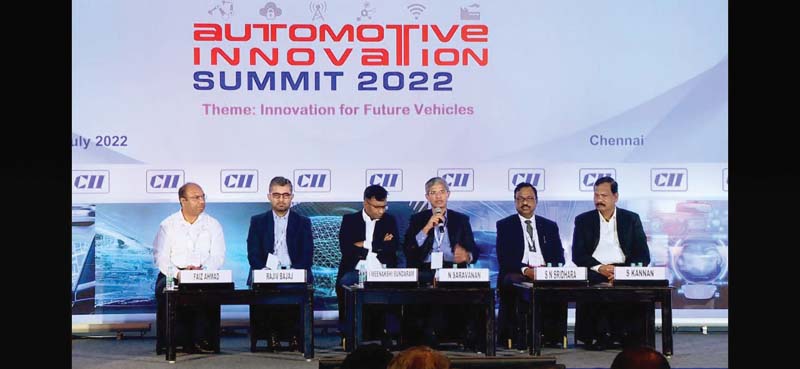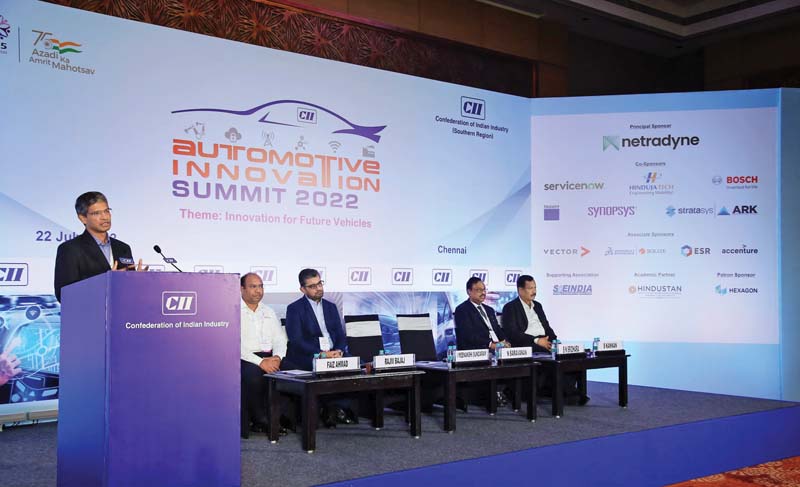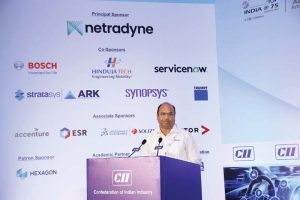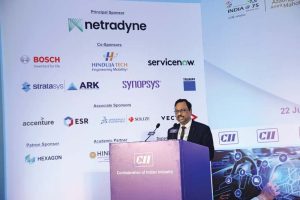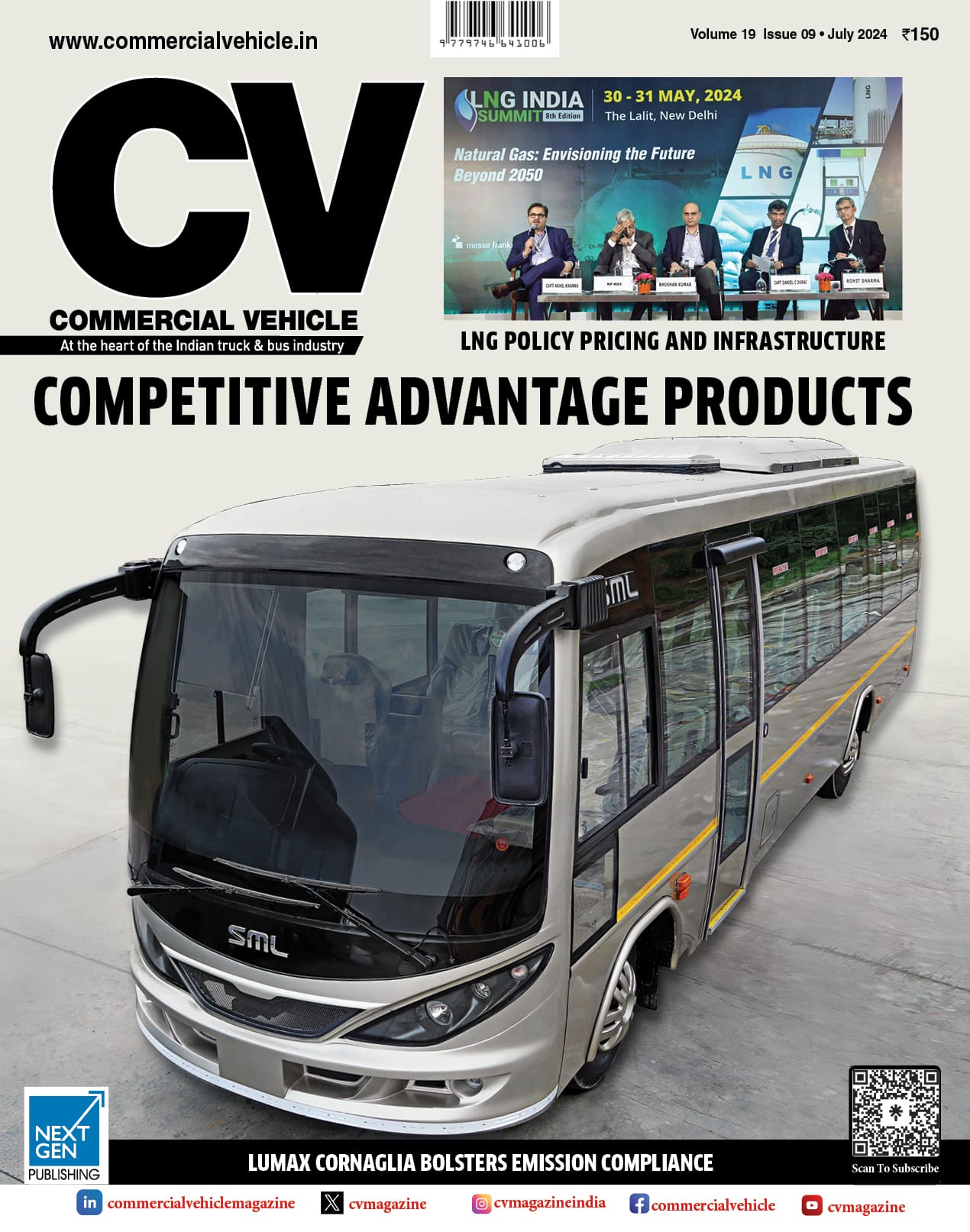The CII Automotive Innovation Summit 2022 deliberated on innovations linked to the future of mobility. Raghul Krishnan looks at the fine print.
The Confederation of Indian Industry (CII) – Southern Region concluded a successful edition of the Automotive Innovation Summit 2022. The focus at the summit was innovation linked to the future of mobility. Drawing attention to a challenging decade that the industry must prepare for, Dr N Sarvanan, Summit Chairman and President and Chief Technology Officer at Ashok Leyland Ltd., cited the new age transitions of the industry. The new energy matrix must be looked at in totality, he exclaimed. Beyond EVs, the focus must also be on Hydrogen fuel cells and the next generation of Internal Combustion Engines (ICE). “The challenge is increased twofold as the OEM’s are not sure of the future technologies and investing in various applications,” he admitted.
Looking at various trends, it was safe to presume that the Government is paying equal attention to introducing active safety features regarded as the building blocks for autonomous driving. Among other trends cited, the leasing model of commercial vehicles, like the pay per kilometre usage basis under the Gross Contract Carriage (GCC) model firmed up with State Transport Undertakings (STUs) found a prominent mention at the summit. It is expected that the future fleet owners will also look to a 100 per cent zero-emission transition of their fleets starting with EVs. It were mentioned that the fast transition from mechanical to electronic requires the industry to identify the apt software layer besides core understanding in light-weighting of vehicles as a result of many mechanical components not finding a place in the next generation of power trains. Battery pack evolution, faster development, Vehicle-to-Infrastructre (V2X) and digital tools also found a mention at the summit.
Investment beyond technology
Calling the current innovation trend in line with future requirements for the automotive industry, Fayaz Ahmed – Chief Operating Officer at Hinduja Tech Ltd. drew attention to crucial developments in his opinion. He drew attention to developments in nanotechnology, and cell chemistry on EV, for instance, as key breakthroughs. The current developments help increase battery density. The focus on ultra high strength steel and innovations in tyres are significant developments too, he pointed. Speaking on semiconductors, Ahmed touched upon ultra wide band technologies crucial to component weight reduction. He called upon the industry to look at lithium sulphur, lithium air, graphene and dual batteries technologies which had immense potential given their 10X energy density and 7X weight reduction crucial to light-weighting.
Citing the growing demand for ultra low volume manufacturing, he drew attention to the emergence of micro factories that the industry must leverage. The realisation of 5G spectrums and commercialisation, he opined, would be a big boost to the automotive industry. “ Industry 4.0, shopfloor support and cyber security growth as a result are emerging as key focus areas. Software plays a major role in automotive and the penetration could see a spike by up to 50 per cent.
The Future is 3D
3D Printing found a prominent mention this year too. Rajiv Bajaj Managing Director – India & SEA Stratasys shared his views on 3D printing technology. He called upon the industry for a wider adoption given the scope of sustainability, concept styling and design including the automotive product design. With supply chain integration and the use of 3D printing closely linked as discovered during the pandemic marred fiscal, the industry was called upon to study the use cases for replacing metals, dual manufacturing and personalisation expected to contribute to the next wave of demand for additives.
Viability of EVs
The viability of EVs was deliberated with a fine lens. S N Sridhara – Vice Chancellor HITS presented some hard hitting statistics to elaborate. By 20230 – India could realise a Compounded Annual Growth Rate (CAGR) of 43.13 per cent in EVs; 42.38 per cent on charging infrastructure and 60.15 per cent on batteries. With these projections as a basis, he pinned hopes on India turning a leader in shared mobility, providing opportunities for electric and autonomous vehicles with an employment potential of nearly five crore jobs. The government, he shared, expects the automobile sector to attract both domestic and foreign investments to the tune of USD eight billion to USD 10 billion. Urging the industry to recalibrate carbon footprint calculations, he stressed on the need to trace it all the way up from the manufacturing to recycle stage for want of greater accuracy. He pointed at the growth potential in super capacitors along with other chemistries like lithium polymer, lithium magnesium, lithium air, metal sulphur, and metal air batteries owing to higher energy density and withstanding capability for more charge cycles.
Table of disruptive management. The slow pace of advancement by Indian companies compared to advanced Western countries was admitted at the summit. Meenakshi Sundaram, Chief Technology Officer – Advanced Engineering Simpons Engines, Simpons & Company Ltd., opined that to deal with the slow pace the need of the hour was to consider data-based innovation. The need was to also re look the technology development and product development process where the lags was identified. The support of component suppliers to OEMs was widely acknowledged with the latter asked to make further progress on data science advancement. The table of disruptive management outlined technologies under four heads: ‘Execute’, ‘Experiment’, ‘Explore’ and ‘Ghost Technologies’. While the latter are on the fringe few are said to be impossible to crack. The scope of realisation perhaps more distant than the rest.
Automotive mega trends: Challenges and opportunities
The mega trends were zeroed in at the summit. Uday Narang – Founder Omega Seiki Mobility (P) Ltd., presented noteworthy trends. With the Indian EV market expected to clock 300-400 mn volumes by 2030, Narang spoke of a 327 per cent growth potential. Here 51 per cent of the three-wheeler segment turning electric was a big industry feat, he exclaimed. To grow in line, he called upon the industry to collectively look at charging infrastructure development, putting in place a local ecosystem and addressing challenges associated with building it. Beyond new EV power trains, he also spoke of retrofitting EV kits, especially in buses as a promising growth area. Prakash Ranjan Sahay, Group Director – R&D, Virtual Prototyping Solutions, Synonpys cited supply chain as the biggest challenge for the industry. He called for the need to expedite testing in the case of Software-Defined Vehicles (SDVs).
Anukur Parwani, Director, ESR Advisers India Pvt. Ltd. focused on the closely associated infrastructure for manufacture and storage. “The business is currently at USD 140 bn and with a presence in 28 countries. I see a multi- level manufacturing approach as an emerging trend in space management,” he opined. The company provides service for 20 plus automotive clients in India and expects growth in the plug and play space going forward. To make operations more sustainable, he cited the use case of clean-energy resources running the infra like drawing energy from solar rooftop panels.
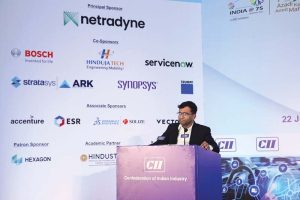 Vinayak Godse, Sr Vice President, Data Security Council of India expects IoT, semiconductors, block chain, HMI, cyber security as key emerging trends for the segment. Urmi Benjamin, Solution Consulting Head- Southern India, Service Now seconds Godse and expects platform-to-platform, rapid adoption of AI and connected manufacturing across the enterprise as fast-growing trends. OEM’s like Mercedes Benz, BMW creating dealer support systems and others like Toyota creating secure software delivery hubs were cited as good benchmarks to follow. On the transition to EVs and the domino effects, Selvaraji Muthu, Sr. GM – Design & Development, Mahle Engine Components India Pvt. Ltd., used India’s plans to reduce CO2 emission by 35 per cent as a basis for citing the project drop in fuel emission. It is expected that the levels could drop from 146 gram per km to 113 gram per km by 2024. The use case of different power trains and increasing role of fuel blends driven by policy was also touched upon at the summit.
Vinayak Godse, Sr Vice President, Data Security Council of India expects IoT, semiconductors, block chain, HMI, cyber security as key emerging trends for the segment. Urmi Benjamin, Solution Consulting Head- Southern India, Service Now seconds Godse and expects platform-to-platform, rapid adoption of AI and connected manufacturing across the enterprise as fast-growing trends. OEM’s like Mercedes Benz, BMW creating dealer support systems and others like Toyota creating secure software delivery hubs were cited as good benchmarks to follow. On the transition to EVs and the domino effects, Selvaraji Muthu, Sr. GM – Design & Development, Mahle Engine Components India Pvt. Ltd., used India’s plans to reduce CO2 emission by 35 per cent as a basis for citing the project drop in fuel emission. It is expected that the levels could drop from 146 gram per km to 113 gram per km by 2024. The use case of different power trains and increasing role of fuel blends driven by policy was also touched upon at the summit.
Also read, The LNG Puzzle



